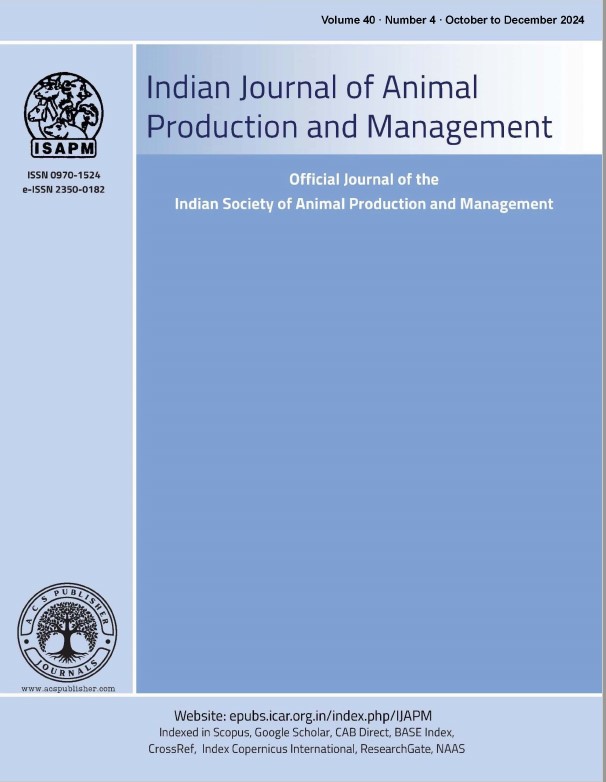GROWTH PERFORMANCE AND ECONOMICS OF RAISING BUFFALO CALVES BY USING PROBIOTICS
Keywords:
Buffalo calf, economic, probiotic, growthAbstract
An experiment was conducted at Livestock Farm, Adhartal, College of Veterinary Science and A. H., Jabalpur, N.D.V.S.U., Jabalpur (M.P.). Eighteen Murrah buffalo calves were selected and were divided into 3 groups having 6 calves in each gruop. Group 1 (Control) was fed with the basal ration, group 2 (T1) was fed with the basal ration with probiotic (Saccharomyces cerevisiae) @5g/animal/day and the group 3 and (T2) was fed with the basal ration with probiotic (Saccharomyces cerevisiae+ Lactobacillus sporogenes) @ 5g/ animal/day. Calf starter (22% DCP and 72% TDN) was provided to all the calves. Besides this, adlib green chaffed fodder was provided to the animals. It was found that calves of the T2 group showed significantly (p<0.05) higher measurements than control and T1 group. The daily body weight gain (kg) through entire period of three months were 0.11±0.01 ,0.19±0.01 and 0.16± 0.01 in C, T1 and T2 group, respectively. The mean of fortnightly dry matter intake (kg) of buffalo calves were 17.05±1.37, 16.66±1.26 and 16.95±1.25 kg in C, T1 and T2 group respectively and these values are significantly (P<0.05) varied. Overall feed efficiency were 0.14±0.02, 0.24±0.03 and 0.18±0.02 in control, T1 and T2 group and the values differed significantly (p<0.05). Overall expenditure (Rs.) per kg body weight gain was calculated as 111.06, 66.02 and 70.34 in C, T1 and T2 groups, respectively. From the findings of the present study it can be concluded that probiotic supplementation alone Saccharomyces cerevisiae or combination of Saccharomyces cerevisiae and Lactobacillus sporogenes improve average body weight gain, feed conversion efficiency and various body measurements of Murrah buffalo calves. Overall rearing cost can be reduced to 40.55% in Saccharomyces cerevisiae fed group and 36.66% in combination of Lactobacillus sporogenes and Saccharomyces cerevisiae fed group in comparison to control group.

